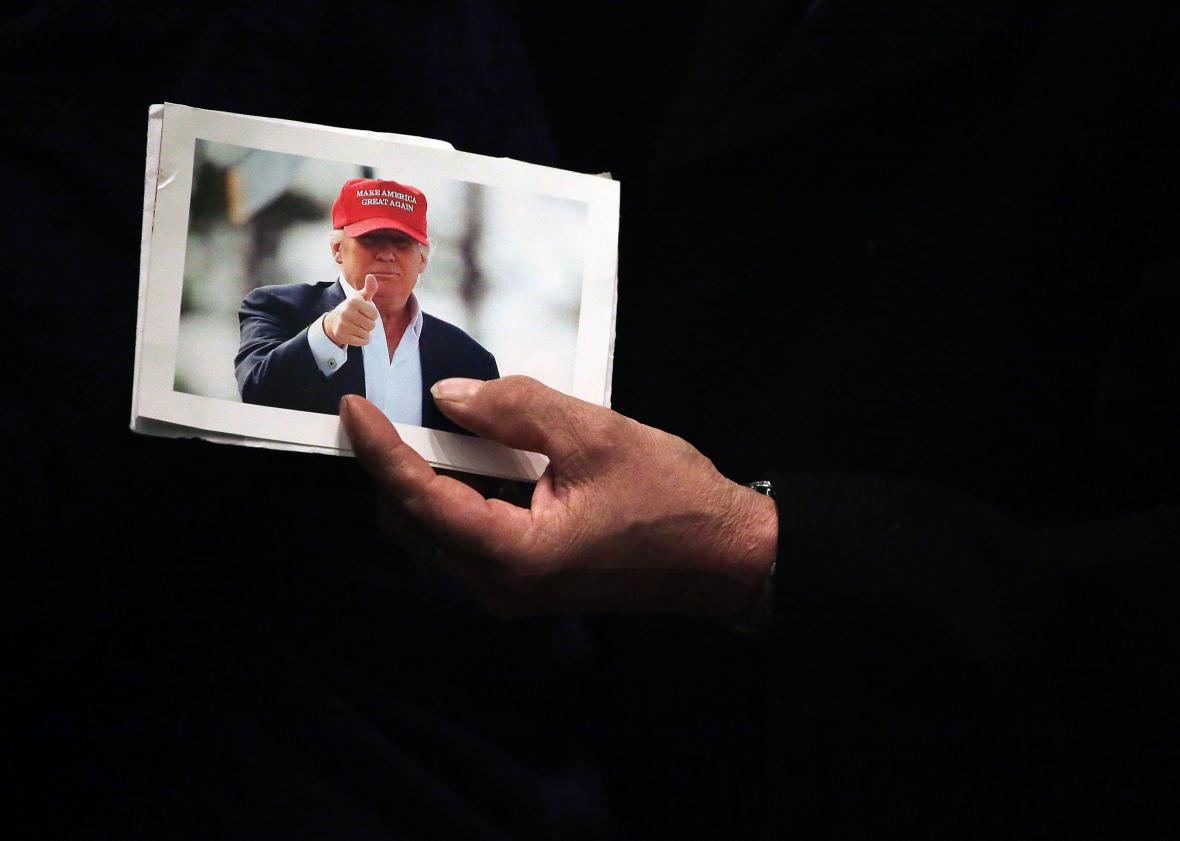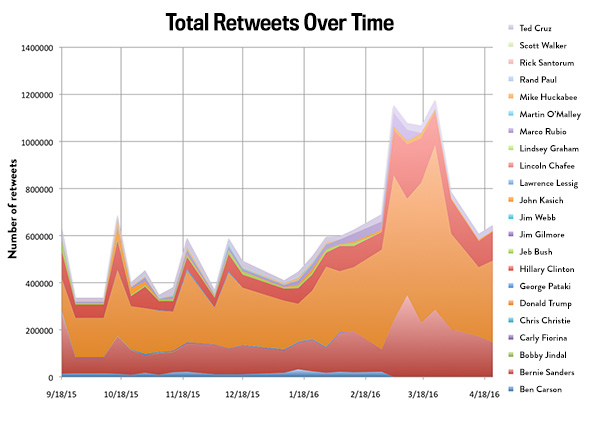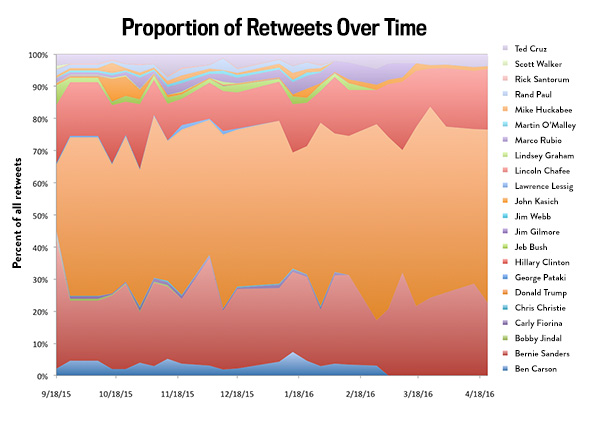This Week’s 2016 Twitter Power Rankings

Joshua Lott/Getty Images
Hello and welcome to the final installment of Slatest’s 2016 Twitter Power Rankings. After eight months of obsessively tracking the candidates’ tweets, we’re going to bring our RT watch to an end this week—but not before we take a slightly longer view of how the campaign Twitter wars have played out.
First, though, let’s take one last look at our usual scorecards. Above, you’ll find our handy interactive of the past week’s worth of candidate tweets: how many each White House hopeful sent and how often they were retweeted and favorited, along with how each fared in the 140-character fight with their political rivals on both sides of the aisle. Below, you’ll find our tried-and-true method of ranking each candidate’s single most successful tweet of the past seven days.
The ground rules for the single-tweet rankings:
- We defined a candidate’s most successful tweet as the one that received the most retweets.
- Tweets that included a direct request for a retweet were ineligible for the traditional rankings because that’s cheating. RT if you agree! (Retweet-begging tweets, though, still appear in the interactive at the top.)
- Only tweets from the preceding seven days were eligible. Since we published the weekly rankings every Friday, that meant any tweet sent in the seven days prior to when we hit the big red button at around 10 a.m. to cull all the data.
Without further ado:
1.) Donald Trump (Last week: 2)
Wow, just announced that Lyin' Ted and Kasich are going to collude in order to keep me from getting the Republican nomination. DESPERATION!
— Donald J. Trump (@realDonaldTrump) April 25, 2016
2.) Bernie Sanders (1)
In 2015, McDonald's CEO saw his pay go up from $1.68 million to nearly $8 million. Yet 15 bucks an hour is too radical for his employees.
— Bernie Sanders (@BernieSanders) April 25, 2016
3.) Hillary Clinton (3)
Caught your speech, @realDonaldTrump. About that "woman's card"...https://t.co/kKaHWISchy
— Hillary Clinton (@HillaryClinton) April 27, 2016
4.) Ted Cruz (4)
Tell me again who will stand up to Washington? Trump, who's Boehner's "texting and golfing buddy," or Carly & me? https://t.co/qvYPSaTEV7
— Ted Cruz (@tedcruz) April 28, 2016
5.) John Kasich (5)
How John Kasich and Donald Trump discuss foreign affairs ... without a teleprompter. pic.twitter.com/ldDmXQ5gBN
— John Kasich (@JohnKasich) April 27, 2016
Fittingly, Trump takes the top spot in both our overall and individual rankings this week. The GOP front-runner proved to be a force on social media early in the campaign, and never let up. When we started the rankings way back in August, Trump actually had 200,000 or so fewer followers than Clinton did. Fast-forward to today, though, and he has roughly 1.75 million more than his likely general election opponent (and nearly 6 million more than Sanders). Trump saw his total follower count nearly double over that same stretch, from slightly fewer than 4 million to 7.83 million as of Friday.
Why does that matter? Trump has had more success than any other candidate bending the news cycle to his will, and Twitter was often his preferred tool of choice. The celebrity billionaire was able to command the media’s attention with a single tweet—and even the occasional retweet. While his rivals often appeared to focus-group and workshop even the most basic of social media statements, Trump seemed to let his tweets fly without so much as a second thought. His brand of belligerent bluster and unapologetic self-promotion proved particularly well-suited to being delivered in 140-character bursts.
For an idea of just how much Trump dominated his rivals on Twitter, here is a graph looking back at the candidates’ RT successes each week. (Note: We stopped tracking a candidate once they dropped out of the race, so when you see someone disappear completely at a certain point, that’s why.) Trump—and we didn’t actually plan this, I swear!—is all that bright orange in the middle of the graph. (This is a stacked area chart, not a line chart, so it's the width of the shaded region—not the position of the line—that represents the number of RTs. The uppermost line in the chart corresponds to the total number of RTs for all candidates, which peaked in March.)
And here’s what those same numbers look like as a proportional share of each week's total. (Same rules as above. It’s the width of the shaded regions that show each candidate's proportional take of RTs.)
As you can see, most weeks Trump accounted for roughly as many retweets as all of his rivals did combined. On Twitter as on the trail, then, there was Trump and there was everyone else.


